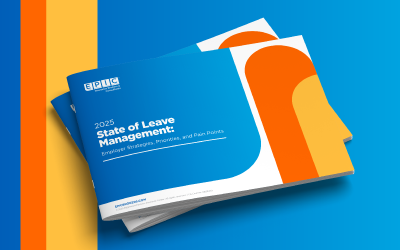The Biden administration recently announced a target for states to open vaccine access to all people by May 1. Many states have already met this target while others have set their sights on dates before the May 1 deadline – prompting many organizations to start planning their return-to-office (RTO) strategies now. Vaccines prove to be more effective than originally expected, with evidence-based research of their efficacy, and employees are starting to show signs of remote work fatigue and isolation.
Viewpoints from Craig Schmidt
Vaccine Update
In a recent Centers for Disease Control and Prevention (CDC) study, the mRNA vaccines (Pfizer and Moderna) have shown that nearly 4,000 healthcare personnel, first responders and essential workers were 90% less likely to get infected with COVID-19 once fully vaccinated and partial vaccination (after dose one and before dose two) has shown to be 80% effective.
Employees’ Thoughts on RTO
Employees express the desire to return to the office in a recent poll conducted by Ceridian:
- 83% want to return to office full time at some point soon
- 52% are feeling isolated from their coworkers with remote work
- 36% feel working from home is negatively impacting their career goals and mental health
RTO Considerations for Employers
Have you considered your organization’s next steps? Deciding how and if your company needs to bring all employees or some employees back to the place of work is a good place to start. Here are few more key considerations:
- RTO policy – what written guidelines should you create for your employees to follow as they return to the workplace?
- Communication strategy – what and how will you educate your employees on COVID-19, vaccines and dispelling myths/rumors?
- Mental health support tools – are you providing necessary access and what more can you do?
- Mask mandates – will employees and guests need to wear masks at all times or only in communal areas?
- Spatial settings – how will you configure physical distancing between desks and safe communal areas?
- Cleaning protocols – how often will the office be cleaned; what about conference rooms, restrooms and other high-touch areas?
- Vaccines – will you create mandates, offer incentives or host an onsite event?
- COVID-19 symptom checking – will employees and guests have to complete a form before or upon arrival?
- COVID-19 testing – will you include regular testing for employees when they start coming back, testing only for symptomatic people, or testing as needed only?
- COVID-19 contact tracing – do you have a system or plan in place to perform contact tracing if an employee or guest tests positive after being on your premises?
See more considerations in our RTO Tools guide, based on issues we’ve seen employers address.
Better yet, join us on April 14 – Bob Simpson, Senior Director, EPIC Benefits Solutions Group and I will host a client panel on these considerations and more. Register for our panel discussion and provide us with any questions you’d like us to cover. We look forward to seeing you there!
See all of our Wellness & Health Management Insights
EPIC offers these opinions for general information only. EPIC does not intend this material to be, nor may any person receiving this information construe or rely on this material as, tax or legal advice. The matters addressed in this article and any related discussions or correspondence should be reviewed and discussed with legal counsel prior to acting or relying on these materials.
Related Content
Products
Employee Benefits Consulting
Our dedicated benefits team is focused on delivering better outcomes – to both your benefits program and ...
Products
Wellbeing & Health Management
Our consultants help you create a strategy around health management that will impact your culture and your ...
Products
HR Technology Solutions
From advising startups on how to build a solid Human Resources (HR) infrastructure, to consulting with ...



